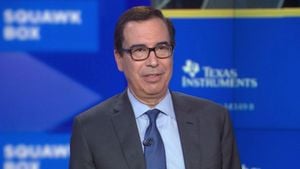The International Monetary Fund (IMF) recently rolled out its updated economic forecast, revealing a mixed global landscape for 2024. China and India emerge as the bright spots with upward revisions in their growth outlooks, while the United States and Japan face modestly lowered expectations. Europe, battered by high energy prices and the war in Ukraine, shows tentative signs of recovery.
As the numbers stand, the IMF maintains its prediction for global growth at a lukewarm 3.2% this year. This figure remains steady from its April forecast, emphasizing a sense of stagnation when compared to nearly two decades of pre-pandemic growth rates averaging 3.8% annually.
"Global growth remains steady," stated Pierre-Olivier Gourinchas, the IMF's chief economist, underscoring a stable, yet underwhelming economic expansion. According to the IMF, China and India are expected to drive nearly half of the global growth this year. China's forecast was revised to 5% from the previously estimated 4.6%, despite facing challenges like a collapsing housing market and an aging workforce. India, with robust rural consumer spending, saw its growth outlook upgraded from 6.8% to 7%.
Meanwhile, Europe shows glimpses of recovery. The eurozone's growth was adjusted slightly upward to 0.9%, largely thanks to a revitalized service industry. However, a weak first quarter led to lowered projections for the U.S. and Japan. The IMF downgraded the U.S. growth forecast to 2.6% and Japan's to 0.7%. The repercussions of a major automobile plant shutdown impacted Japan's early 2024 performance, contributing to this diminished outlook.
Despite this mixed economic bag, inflation remains a persistent global thorn. After peaking at 8.7% in 2022, inflation rates are on a downward trajectory, expected to ease from 6.7% in 2023 to 5.9% this year, and further down to 4.4% in 2025. However, service sector inflation remains stubbornly high, potentially leading to protracted periods of elevated interest rates from central banks, which could, in turn, stifle economic growth.
Gourinchas captured this nuanced outlook succinctly: "The good news is that as headline shocks receded, inflation came down without a recession." But he also noted, "The bad news is that it still isn’t back to pre-pandemic levels." This dichotomy encapsulates the current global economic climate—progress, but not quite enough.
Looking ahead, the global economic narrative continues to be one of measured optimism with significant caveats. The world finds itself in a precarious balance, navigating between the promise of recovery and the persistent shadows of inflation and regional instabilities.



